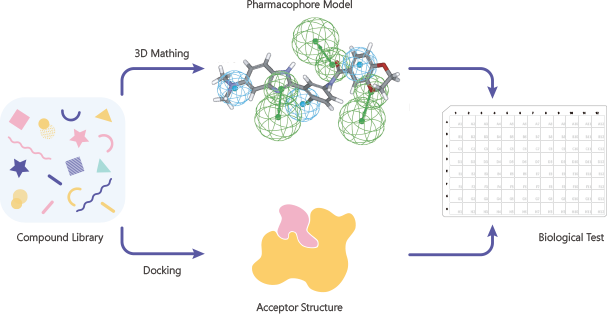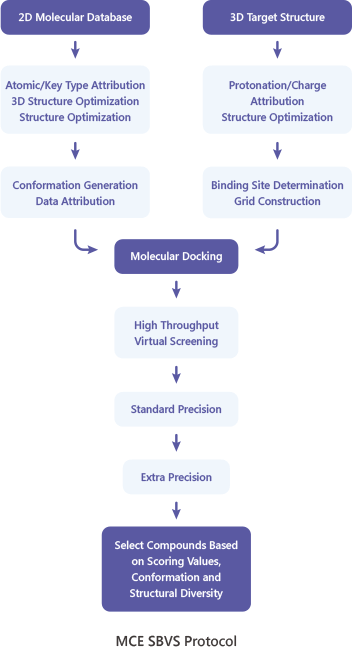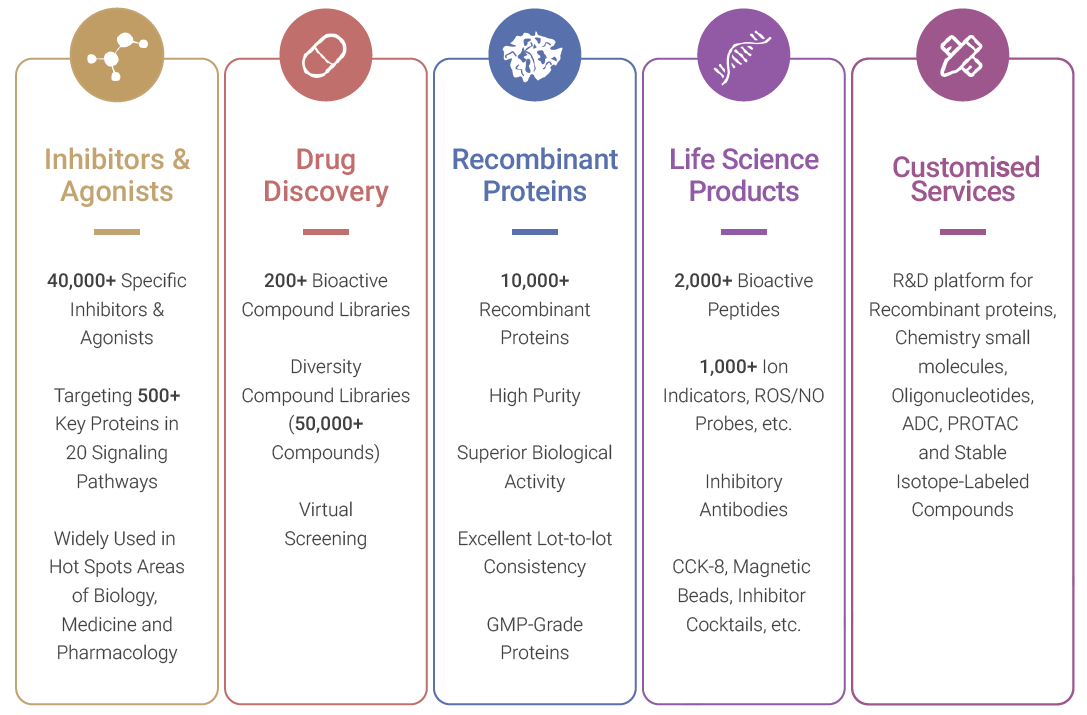On this page
- Signalling Pathways
- Oligonucleotides
- Isotope-Labelled Compounds
- Natural Products
- Fluorescent Dye
- Inhibitory Antibodies
- Peptides
- Biochemical Assay Reagents
- Compound Screening Libraries
- Virtual Screening
- Recombinant Proteins
- Protein Expression Service
- Custom Synthesis Service
- ADC-Related Custom Services
- PROTAC-Related Custom Services
- MCE Kits
- Click Chemistry
- GMP Small Molecules
Signalling Pathways
- Anti-infection
- Antibody-drug Conjugate/ADC Related
- Apoptosis
- Autophagy
- Cell Cycle/DNA Damage
- Cytoskeleton
- Epigenetics
- GPCR/G Protein
- Inflammation
- JAK/STAT Signalling
- MAPK/ERK Pathway
- Membrane Transporter/Ion Channel
- Metabolic Enzyme/Protease
- Neuronal Signalling
- NF-κB
- PI3K/Akt/mTOR
- PROTAC
- Protein Tyrosine Kinase/RTK
- Stem Cell/Wnt
- TGF-beta/Smad
- Vitamin D Related
- Other
Oligonucleotides
Isotope-Labelled Compounds
Isotope-Labelled compounds are chemical substances in which some atoms in their molecules are replaced by isotope atoms. The range of stable isotope products can cover from gases to complex molecules. Isotope-Labelled compounds could provide a site-specific investigation of structures, making molecules easily detectable by mass spectrometry and NMR, and maintaining the physico-chemical properties of the target molecule at the same time.
MCE isotope-Labelled compounds are all stable isotope-Labelled compounds and are non-radioactive Labelled substances. MCE isotope-Labelled compounds are unique tools for identifying and understanding biological and chemical processes. Stable isotope-Labelled products are now getting more and more popular among scientists. The scope of application is gradually penetrating into various scientific fields, such as life sciences, food and medicine, agriculture, environment, geology, etc. Stable isotope-Labelled compounds have a wide range of applications in the Life Science areas, such as Metabolomics, Proteomics, Clinical studies, Deuterium drugs, etc.
Isotopic Labels
- Deuterium (2H,D)
- Carbon-13 (13C)
- Nitrogen-15 (15N)
- Oxygen-17&18 (17O &18O)
- Sulfur-34 ( 34S)
- Boron-10 (10B)
Category
- Isotope-Labelled Inhibitors
- Isotope-Labelled Vitamins
- Isotope-Labelled Amino Acids & Peptides
- Isotope-Labelled Fatty Acids
- Isotope-Labelled Bile Acids
- Isotope-Labelled Steroids
- Isotope-Labelled Metabolites
- Isotope-Labelled Nucleic Acids
- Isotope-Labelled Environmental Contaminants)
- Isotope-Labelled Synthetic Intermediates
- Other Isotope-Labelled Compound
Natural Products
A natural product is a chemical compound or substance produced by a living organism-that is, found in nature. In the broadest sense, natural products include any substance produced by life. Natural products are mainly obtained by separation, and they can also be prepared by chemical synthesis (both semisynthesis and total synthesis) and have played a central role in the development of the field of organic chemistry by providing challenging synthetic targets. Natural products have the characteristics of diverse structures and wide sources, so they have high value in the prevention and treatment of diseases. They have become an important source of leading compounds in the search for innovative drugs. In recent years, natural products are more and more widely used in the fields of food, cosmetics and health products, showing high application value.
Structural Classification
- Alkaloids
- Saccharides
- Flavonoids
- Terpenoids
- Quinones
- Phenylpropanoids
- Steroids
- Stilbenes
- Phenols
- Ketones, Aldehydes, Acids
- Antibiotics
- Cyclopeptides
- Amino acids
- Other
Source classification
Classification of Application Fields
- Disease Research Fields
- Food Research
- Cosmetic Research
- Research of Health Products
- Agricultural Research
Fluorescent Dyes
Fluorescence is a phenomenon of photoluminescence in luminescence. When an atom is irradiated by light, some electrons around the nucleus jump from their original orbitals to higher energy orbitals under the influence of light energy, i.e., from the ground state to the first or second excited single-line state, etc. Due to the instability of the first or second excited singlet state, the electron returns from the excited singlet state to the ground state accompanied by released energy, resulting in fluorescence.
Fluorescent dyes can be covalently bound or physically adsorbed in the structure of the substance. The fluorescence properties allow for the characterization, localization and quantitative analysis of the Labelled object. Fluorescent dyes have shown great potential for the detection of proteins, nucleic acids, cells, and immunoassays, attributed to the advantages in non-radioactive contamination, simple experimental operation and easy observation.
Fluorescent dyes have penetrated many fields such as pharmacology, physiology, environmental science, and information science, as well as functional studies of proteins and drug screening.
- Cell staining analysis
- In Vivo Imaging
- Fluorescence Coupling Reagent
- Enzyme Labelling
- Labelling Chemistry
- Biology Analysis
- Histological Analysis
- Fluorescence Wavelength Division
- Other
Inhibitory Antibodies
MCE Inhibitory Antibodies are monoclonal antibodies (mAbs) that have been extensively used in the hottest research areas, such as cancer, immunology and infection. These monoclonal antibodies (mAbs) bind monospecifically to certain cells or proteins, thus stimulating the immune system to attack the malignant tumor cells and preventing tumor growth by blocking specific cell receptors. They can inhibit PD-1, PD-L1, EGFR, VEGFR, TNF-alpha or other targets which are unusually active in diseases, such as non-Hodgkin lymphoma, Hemophilia A, renal cell carcinoma, Parkinson's disease and metastatic HER2-positive breast cancer. For example, by binding to VEGF, Bevacizumab prevents VEGF from interacting with its receptors, thereby inhibiting new vessel growth. Lambrolizumab targets the programmed cell death 1 (PD-1) receptor of lymphocytes. By preventing the binding of its ligands (PD-L1 and PD-L2), Lambrolizumab induces an antitumor immune response.
Peptides
Peptides are a group of biologically active substances that are involved in various cellular functions of organisms. Peptides are often used in functional analysis, antibody research, vaccine research and especially in the field of drug research and development. Peptides have a variety of biological functions, such as, anti-thrombosis, anti-hypertension, antibacteria, antivirus, anticancer and antioxidation, immunoregulation, and cholesterol-lowering effects.
MedChemExpress (MCE) offers a comprehensive collection of tag peptides, amino acid derivatives, blocking peptides, and bioactive peptides to clients in pharmaceutical and academic institutions all over the world. The bioactivity and safety of most bioactive peptides are confirmed by preclinical research and clinical trials. The peptides target on caspase, ACE, serine protease, integrins, JNK, and so on. And some peptides are the linkers for antibody-drug-conjugation. Tag peptides include common tags such as HA, FLAG, and c-Myc peptide.
Product quality is the key to our success and we take pride in offering only the highest-grade products. Product identity, quality, purity and activity are assured by our robust quality control and assurance polices, programs and procedures. We perform thorough analytical tests (HPLC and LC-MS), stability tests and activity assays on our peptides and the test results are available to clients. Comprehensive information such as purity, length, modification, sequence and recommended solvent will be provided.
Biochemical Assay Reagents
Biochemical agents refers to the life science research related to biological material or organic compounds. Due to a wide range of life sciences, rapid development, and therefore a wide variety of such agents, complex in nature. There are electrophoresis reagents, chromatography reagents, centrifuged reagents, immunological reagent, Labelled reagent, staining agents, penetration agents and carcinogens variable, insecticides, culture, buffering agents, electron microscopy reagents, protein and nucleic acid precipitating agent, condensing agent ultrafiltration membrane, clinical diagnostic reagents, dyes, antioxidants, preservatives, detergents and surfactants, standard biochemical reagents, biochemical reagents quality control materials, separation material, etc..
Screening Libraries
The success of high throughput screening (HTS) in finding decent starting points for drug discovery heavily depends on the quality of the compound library. MCE can provide 170+ compound libraries which include Bioactive Screening Libraries, Diversity Compound Libraries and Virtual Screening Database. These libraries contain over 16 million available compounds. What's more, each compound has validated bioactivity data and/or physicochemical properties. These compound libraries are useful professional tools for drug discovery and new indication research and can be used for HTS, high-content screening (HCS) and virtual screening (VS).
- Bioactive Screening Libraries: Our ready-to-use bioactive compound libraries consist of over 15,000 small molecules with validated biological and pharmacological activities.
- Diversity Compound Libraries: Representative diversity sets consist of 50K Diversity Library (50,000 compounds) and 5K Scaffold Library (5,000 compounds).
- Virtual Screening Database: 50+ compound libraries which including 16 million diverse screening compounds with unusual structures and unique properties.
- MCE offers customized compound libraries based on your specific needs. You can select compounds, format (powder/liquid), size and plate map depending on your requirements.
Compound Screening Libraries
- Bioactive Screening Libraries
- Diversity Compound Libraries
- Drug Repurposing Series
- Natural Products Series
- Cell Death Series
- Metabolism Series
- According to Product Features
- According to Structures
- Fragment Libraries
- According to Signalling Pathway or Protein Family
- Disease Related Compound Libraries
Virtual Screening
In the last decades, high-throughput screening (HTS), which refers the experimental screening of large libraries of chemicals against a biological target, plays a crucial role in the identification of new lead compounds in the early-stage drug discovery. However, HTS requires expensive equipment and facilities, and its success depends on the size of the compound library. The high cost and low hit rate associated with HTS have stimulated the development of in silico virtual screening (VS). Virtual screening is a computational technique used to search libraries of small molecules in order to identify those structures which are most likely to bind to a drug target. Nowadays, it has become a crucial step in early-stage drug discovery owing to its unique advantages over experimental HTS: drug target-relevant, competitive price and efficient.
MedChemExpress (MCE) provides high quality virtual screening service that enables researchers to identify most promising candidates. Based on the laws of quantum and molecular physics, our virtual screening services can achieve highly accurate results. Our optimized virtual screening protocol can reduce the size of chemical library to be screened experimentally, increase the likelihood to find innovative hits in a faster and less expensive manner, and mitigate the risk of failure in the lead optimization process.


Recombinant Proteins
MedChemExpress offers a comprehensive catalogue of recombinant proteins with superior activity and significantly low endotoxin levels for a variety of applications, including cell growth and differentiation, cell signaling, studies involving disease onset and progression and biopharmaceutical target discovery, protein structure and function analysis.
- High purity
- Superior Biological Activity
- Excellent lot-to-lot consistency
- GMP-grade proteins
- Cytokines and Growth Factors
- Immune Checkpoint Proteins
- CAR-T related Proteins
- CD Antigens
- Fc Receptors
- Receptor Proteins
- Enzymes & Regulators
- Complement System
- Ubiquitin Related Proteins
- Viral Proteins
- Biotinylated Proteins
- Fluorescent-Labelled Recombinant Proteins
- GMP-grade Proteins
- Animal-free Recombinant Proteins
- Others
Recombinant Protein Expression Service
Recombinant protein is a protein encoded by a recombinant DNA that has been cloned in a system that supports the expression of the gene and translation of mRNA. The host cells used for recombinant protein production can be derived from bacteria, mammalian cells, insects and yeast. Recombinant proteins have been widely used in most hot research areas such as immune checkpoints, antibody-drug targets, CAR-T cell therapy targets, Fc receptors, influenza viral proteins and cytokines.
MedChemExpress has professional protein expression and purification technology with customized services of high-purity active protein from mg to g scale. MCE multiple protein expression systems include bacteria, yeast, insect and mammalian expression systems. MCE focuses on high-quality protein production and seeks to partner with scientists all over the world to accelerate scientific discovery.
Custom Synthesis Service
Stock Products
MCE is dedicated to providing customers with all kinds of high quality bioactive small molecules, including inhibitors, antagonists, agonists and modulators. We own a comprehensive product line and offer professional after-sale services to achieve customer satisfaction.
Our products have been widely used in various fields of biopharmaceutical research and development, especially in the research focus areas such as cancer, infection, autoimmune diseases, diabetes, cardiovascular diseases and neurodegenerative diseases. Our tech-support team classifies products into Apoptosis, Epigenetics, Wnt/Hedgehog/Notch, PI3K/Akt/mTOR, etc., according to the basic biological theory of signaling pathways which cover all aspects of the pathogenesis of diseases.
Bulk and Custom Product Services
Products in larger pack sizes, or products not included in our catalog.
MedChemExpress has an experienced team of synthesis chemists. Led by excellent scientists, our chemical synthesis team is capable of supporting all kinds of chemistry projects, even multiple step synthesis of complex molecules, such as metabolites and steroids. MedChemExpress has always been committed to develop the most optimized synthetic route and high-quality products that exceed international standards. With rich experiences in preparing a large number of different bioactive molecules, we can provide your customized compounds more rapidly than other companies.
ADC-Related Custom Services
MCE owns a strong technical team and state-of-the-art facilities. For ADC products, we have rich experience in research development and production. We continue to make breakthroughs and innovations, synthesize different types of ADC products according to customer requirements, and ensure effectiveness and consistency of products and high-quality and efficient service. MCE can provide one-stop services for the design, synthesis, analysis, purification, optimization, detection and evaluation of ADC-related products (ADC Cytotoxin, ADC Linker, Drug-Linker Conjugates for ADC and Antibody-drug Conjugate (ADC)).
PROTAC-Related Custom Services
PROTAC, short for PROteolysis-TArgeting Chimeras, is a heterobifunctional nanomolecule containing two different ligands, ligand for ubiquitin E3 and ligand for target protein. The two parts are connected by linker to form a "three-unit" polymer, target protein ligand-linker-E3 ligase ligand.
Once PROTAC molecule entering the cell, ligand for protein of interest (POI) can specifically bind to the corresponding target protein, while E3 ligase ligand can recruit E3 ligase to form the triadic complex of POI-Linker-E3 ligase, in which E3 ligase mediates ubiquitination on POI by ubiquitin from enzyme E2. POI Labelled by ubiquitin is recognized and degraded by proteasome. It is not necessary for POI ligand to occupy the binding site for a long time during this progress because of instantaneous ubiquitination after short formation of the ternary complex, so PROTAC can be reused for many times in cell.

MCE Kits
MCE offers a broad range of high-quality, cost-effective, ready-to-use assay kits for the convenient and dependable analysis of molecular, protein, cell biology research. These assay kits rang from PCR & qPCR & RT-PCR, nucleic acid electrophoresis to vector construction, from protein preparation, protein purification to protein detection, from cell culture to cell analysis. MCE provides these reliable assay kits to simplify your workflow and research life as much as possible.
- Molecular Biology (24)
- PCR & qPCR (8)
- RT-PCR (3)
- Nucleic Acid Gel Electrophoresis (8)
- Vector Construction (1)
- Materials (1)
- Nucleic acid extraction and purification (3)
- Protein Biology (51)
- Protein Sample Preparation (13)
- Protein Purification (30)
- Protein Electrophoresis & WB (12)
- Cell Biology (40)
- Cell Culture (14)
- Cell Analysis (26)
Click Chemistry
Click chemistry is used to describe the selective, modular, wide range and high-yield chemical reactions that allow rapid synthesis of new compounds through heteroatom linking (C-X-C). Bertozzi developed click chemistry in a new dimension —Bioorthogonal chemistry. It is defined as a rapid and selective reaction that does not interfere with biological processes under physiological conditions. Common reaction structures of click chemistry, such as Azide, Alkyne, DBCO, BCN, TCO and Tetrazine. Click chemistry reactions can be categorized into three categories:
(1) Copper(I)-catalyzed azide-alkyne cycloaddition (CuAAC);
(2) Strain-promoted alkyne-azide cycloaddition (SPAAC);
(3) Inverse-electron-demand Diels-Alder (iEDDA).
As a simple and efficient connection method, click chemistry is widely used in biomedical fields, such as fluorescence imaging, targeted therapy, ADC synthesis and PROTAC synthesis.
Many studies have demonstrated the great potential of click chemistry not only in chemical synthesis but also for biological and biomedical applications, especially copper-free click chemistry, including SPAAC and iEDDA reactions. Copper-free click chemistry has been shown to have favorable reaction rates and orthogonality in water, buffer solutions, and physiological conditions without toxic catalysts. A massive percentage of the research has been dedicated to the applications of bioconjugation, biomedical imaging, Labelling, nanoparticle modification, and targeted delivery. For example, cellular membrane lipids and proteins could be selectively Labelled with click chemistry in vitro. Metabolites, posttranslational modifications, and enzyme activities can be monitored in living systems with copper-free click chemistry.
Structural Classification
Classification of Application Fields
GMP Small Molecules
Good Manufacturing Products (GMP) is a guideline ensuring safety and high-quality of medical products. GMP Small Molecules are used as ancillary reagents in the manufacture of stem cell therapies, and are needed at all stages of work flow such as reprogram, self-renewal, proliferation, differentiation and storage. At MCE, GMP Small Molecules are produced in strict accordance with cGMP guidelines, assuring safe, reliable, consistent and quality-assured ancillary reagents for cell therapies. If required, MCE provides with relative materials and license for project declarations and official on-site audits in period of IND to NDA.

